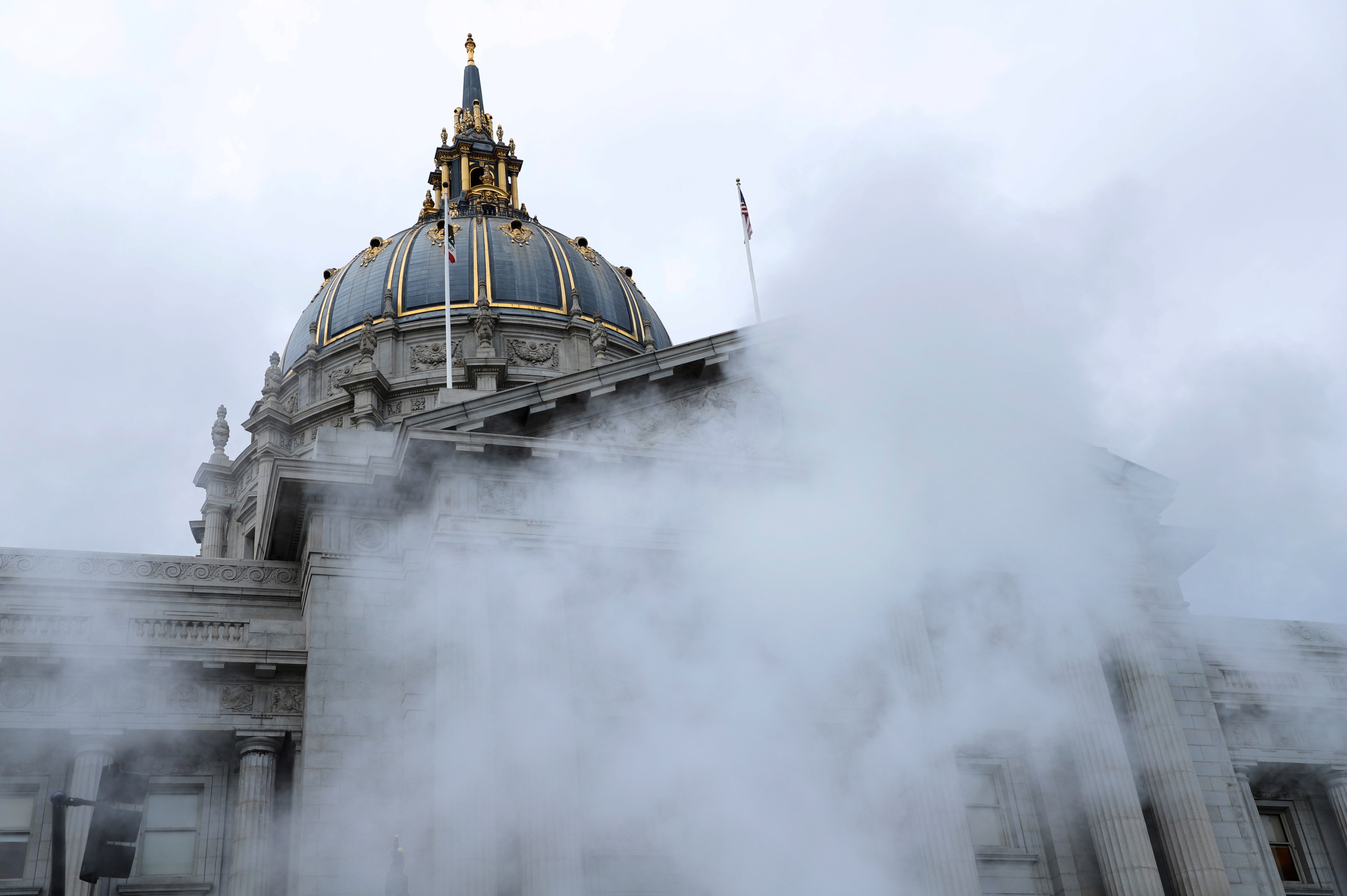Three days before San Francisco politicians planned to convene in United Nations Plaza for a public hearing about the city’s drug crisis, a very different type of meeting was held in the square around 9:30 p.m. Saturday.
Over 100 people gathered at U.N. Plaza’s easternmost corner, sprawled out under light rain and cold winds, using and selling drugs and fencing items that ranged from single cigarettes to pepper spray.
Ambulances came and went while The Byrds’ “Mr. Tambourine Man” played from speakers installed by the city on the opposite side of the plaza.
The plaza, as much as anywhere in the city, has come to represent San Francisco’s ever-changing response to the worsening drug crisis. It was the site of the city’s first safe-consumption site. But the city shuttered the site amid legal concerns, leaving a combination of law enforcement, park rangers and street ambassadors to patrol the square. And on Tuesday, the Board of Supervisors is expected to grill Mayor London Breed at an unprecedented hearing in the open-air plaza.
But as police are expected to clear the area for Tuesday’s meeting, the city’s leaders are unlikely to be accompanied by the full misery and disarray regularly on display in and around the plaza.
Thirty-three people have died of drug overdoses within a one-block radius of the plaza, a bustling transit hub that is two blocks from City Hall, since Jan. 1, 2020, according to data from the Chief Medical Examiner’s Office.
Nearby businesses, as well as an addiction treatment center across the street, have said that the visible drug use and sales have taken a toll on employees and made life difficult for clients seeking recovery from drugs.
Nearby residents told The Standard that they’ve noted an increase in enforcement measures in the plaza leading up to the event. And Gov. Gavin Newsom deployed California Highway Patrol officers to the Tenderloin neighborhood to combat open-air drug dealing in April.
But those efforts reportedly just lead people to gather on nearby side streets and alleyways or in other neighborhoods entirely.
The plaza has been the third-most heavily policed intersection in San Francisco in 2023. Law enforcement has been dispatched to U.N. Plaza around 2,081 times through May 21, according to city data. The vast majority of those dispatches—1,612 of them—were “passing calls,” or when officers patrol an area to demonstrate a police presence. Officers were also called out to support other city employees working at the plaza almost 90 times and to address a “suspicious person” 75 times.
In a letter Monday, Board of Supervisors President Aaron Peskin asked Breed to stand up a “sustained emergency operations center” to coordinate the many agencies involved in the drug crisis, including the San Francisco Police Department, the District Attorney, California Highway Patrol, the Department of Public Health, BART police and others, and direct them to “shut down” open-air drug dealing within 90 days.
Police activity in the area has climbed precipitously since Covid-era lows in 2020 but still hasn’t reached pre-pandemic totals. Law enforcement was dispatched to U.N. Plaza an average of about 630 times each month in 2019. That figure was around 470 times per month from January through April 2023, the data shows.
Lydia Bransten, executive director of a nonprofit called the Gubbio Project that runs a homeless shelter in the Mission District, told The Standard that her program has recently seen an influx of people who have been pushed out of the Tenderloin neighborhood by police.
Bransten criticized the city for merely shuffling people around without providing sufficient resources, such as facilities where people could use drugs under medical supervision.
“What exactly are they trying to do other than make people uncomfortable and unsafe?” Bransten said. “When you push people into hiding, there are going to be more overdose deaths.”
The city has seen a record-breaking number of overdose deaths this year, with 268 people falling victim in just four months, according to preliminary data from the Chief Medical Examiner’s Office.
The city operated a safe-consumption site in the plaza for just under 11 months last year, reversing over 300 overdoses during its tenure. But Breed didn’t renew the contract for the controversial site, and plans to create similar facilities in other locations have since hit a wall over legal concerns.
Peskin said that he called Tuesday’s meeting to get clarity on Breed’s plan, which has seemingly oscillated between law enforcement measures and harm reduction.
But residents remain skeptical that the half-hour meeting, which requires coordination from multiple departments and will cost $4,650 in media services and other expenses, will result in a well-rounded solution.
Max Young, who owns a bar on the corner of Seventh and Market streets, said that the issues at the plaza shouldn’t be new to the local politicians. Young said that he had to shut down his bar in September 2019 due to the visible drug market.
“We’re coming up on 7 or 8 years of this,” Young said. “It’s good that they’re elevating the issue. But the fact is that there is still no comprehensive plan to address the open-air drug markets.”
